Papers by Hatsuki Aishima
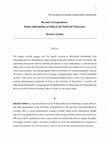
Anthropology and Ethnography are Not Equivalent, Irfan Ahmad ed, Oxford: Berghahn Books, 2020
This chapter critically engages with Tim Ingold’s proposal to differentiate anthropology from eth... more This chapter critically engages with Tim Ingold’s proposal to differentiate anthropology from ethnography and how anthropologists relate to people during their fieldwork as well as back home. My contribution demonstrates that by redefining the purpose of social anthropology as epistemological inquiry into everyday life in the field and at home, Ingold provides an invaluable clue to overcome the crisis of representation. After placing Ingold’s thesis in the debates over writing ethnography, I discuss the extent to which his observations have a bearing on anthropological studies of Islam and Muslim societies. I then revisit my own work on the Egyptian middle classes as well as my experience of teaching anthropological scholarship on Islam at the University of Manchester. I conclude with observations about Ingold’s warning against the conflation between anthropology and ethnography and the ways in which it informs teaching courses on Islam in a university setting.

The Encyclopaedia of Islam Three, 2014
Mamd, Abd al-alm Abd al-alm Mamd (1910-78), a leading f scholar of the 1960s and 70s... more Mamd, Abd al-alm Abd al-alm Mamd (1910-78), a leading f scholar of the 1960s and 70s in Egypt and reformist rector of al-Azhar Mosque University during the period of Sadat's presidency (1970-81), is credited for his dedication to al-Azhar and for popularising f knowledge through his publications and radio broadcast. His commitment to revitalising Islamic knowledge earned him the honorary title of "the al-Ghazl of the twentieth century." Since 1979 his mawlid (annual birthday festival) has been celebrated in al-Salm, his home village in the Nile Delta. This two-day ceremony, which is announced in national newspapers and broadcast by radio and TV stations, has become the government model of a modern mawlid in contrast to the mainstream popuar mawlids which are regarded as the antithesis of public Islam. Abd al-alm Mamd belonged to the last generation of Egyptian scholars to receive a comprehensive training as an Azhar student before the university was divided into colleges, but he was also one of the earliest to acquire first-hand experience of Western scholarship. After receiv
American Ethnologist, 2019

Culture and Religion
Sufi becoming is conditioned on finding a master who could take one through the spiritual journey... more Sufi becoming is conditioned on finding a master who could take one through the spiritual journey for attaining Ultimate Truth. In contrast, Islamic reformism since the late eighteenth century calls for the significance of establishing a direct and autonomous relationship to God and denies the roles of charismatic authority who could mediate between Him and a Muslim. This paper examines how Egyptian Sufi theorists tackled the issue of individualised faith and personal connection to their masters by looking at the conversion narrative of ‘Abd al-Halim Mahmud (1910–1978), the French-educated Egyptian scholar of Sufism. He vividly depicted in his work the encounters with the Shadhili masters, whether in person or in ru’ya (dream-like vision), and demonstrated his firm connection to them. In spite of publicly disclosing his Sufi becoming, he managed to gain the status of a Sufi celebrity by performing the selfless Self who aspires to gain access to transcendental reality.

Die Welt des Islams, 2016
To what extent can a national hero be a Sufi? This article examines the much contested yet still ... more To what extent can a national hero be a Sufi? This article examines the much contested yet still underexplored relationship between the public discourse of modernity and Sufism by looking at how television producers dealt with Sufi elements in ʿAbd al-Ḥalīm Maḥmūd’s (1910–78) biography. The Egyptian public remembers ʿAbd al-Ḥalīm Maḥmūd as a Shaykh al-Azhar and a distinguished scholar of Sufism of the 1970s. His biopic series broadcast on national television during the Ramadan of 2008 showed the delicate nature of exposing Sufi practices in public Islam. ʿAbd al-Ḥalīm’s career path leading up to the level of a high-ranking scholar of al-Azhar was celebrated as the result of strong faith in God. However, his Sufi practices were modified to correspond to the television producers’ understanding of correct Sufism and to show how “private” spiritual pursuits would not hinder one from being an economically productive individual in the public sphere.
Minpaku Monthly, 2018
My review of the newly opened exhibition hall of the Okinawa Karate Kaikan in Okinawa.
A short essay on karate trainings for adult beginners in Egypt.
A short essay on my experience of trying out as a karate trainer in Cairo.

Muslim Youth and the 9/11 Generation, 2016
Anthropological inquiries into mass media and Islam, particularly with regard to da‘wa practices,... more Anthropological inquiries into mass media and Islam, particularly with regard to da‘wa practices, have demonstrated the significance of “staging” strategies of public religious personalities (Salvatore 1998), as well as the diverse ways in which mass-mediated Islam facilitates the sustenance of lay audiences’ moral disposition (Hirschkind 2006). I build on these studies and shed light on the youthful aspirations and challenges of educated Egyptian Muslims engaging in da‘wa activities. I illustrate how Amr Khaled’s televised preaching facilitates the production of other Islamic religious commodities such as the exclusive da‘wa workshops in Cairo organized by Fadel Soliman (b. 1966) of Bridges Foundation. Taking into account the nexus of new media, the education industry, and the global political economy, I thus analyze how a strategic segment of young Egyptians were called upon to communicate with non-Muslims of the West about ways of being Muslim in the post-9/11 era.
Minpaku Monthly, 2012
Aishima, Hatsuki, “The Place of the Popular: Who are ’the Authentic Egyptians’?” Minpaku Monthly.... more Aishima, Hatsuki, “The Place of the Popular: Who are ’the Authentic Egyptians’?” Minpaku Monthly. 36.1, 22-23, 2012. (in Japanese)

Die Welt des Islams, 2016
To what extent can a national hero be a Sufi? This article examines the much contested yet still ... more To what extent can a national hero be a Sufi? This article examines the much contested yet still underexplored relationship between the public discourse of modernity and Sufism by looking at how television producers dealt with Sufi elements in ʿAbd al-Ḥalīm Maḥmūd’s (1910–78) biography. The Egyptian public remembers ʿAbd al-Ḥalīm Maḥmūd as a Shaykh al-Azhar and a distinguished scholar of Sufism of the 1970s. His biopic series broadcast on national television during the Ramadan of 2008 showed the delicate nature of exposing Sufi practices in public Islam. ʿAbd al-Ḥalīm’s career path leading up to the level of a high-ranking scholar of al-Azhar was celebrated as the result of strong faith in God. However, his Sufi practices were modified to correspond to the television producers’ understanding of correct Sufism and to show how “private” spiritual pursuits would not hinder one from being an economically productive individual in the public sphere.
Journal of the Royal Anthropological Institute, Jan 1, 2009
Die Araber im 21. Jahrhundert: Politik, Gesellschaft, Kultur, 2013

Ethnographies of Islam: Ritual Performances and Everyday Practices, 2012
In recent decades, professional boundaries between Islamic studies and sociocultural anthropology... more In recent decades, professional boundaries between Islamic studies and sociocultural anthropology have blurred, as anthropologists have started to produce insightful work on scholarly cultures of Islam, illuminating the diverse manners in which canonical texts are acquired, produced and performed in a given sociohistorical context. 1 Such ethnographies from Muslim societies have shed light on the profane life of sacred texts, analysing the everyday contexts in which ordinary Muslims skilfully employ the words from the Qur'an and hadiths (accounts of Prophet Muhammad) quoted by religious authorities for their purposes. 2 At the same time, field research has become a common approach in Islamic studies when exploring the topics where written accounts are scarce. 3 My study furthers such enquiries into Islamic knowledge and scholarship through the prism of a former Shaykh al-Azhar, 'Abd al-Halim Mahmud (1910-78) who continues to receive exceptionally high media attention, as compared to his contemporaries. 4 I approach Islamic intellectual fields as markets for producing specific cultural commodities, which result from dynamic interactions between authors and their intended audiences. This article is largely based on the ethnographic data I gathered from my two-year period of fieldwork in Egypt (April 2006-October 2008) where I organised "tutorials" with educated Egyptians who were willing to assist me with reading the books by 'Abd al-Halim Mahmud. These tutorials provided the perfect arena to discuss my interest in exploring the notion of an "authentic scholar" ('alim salih or sahih) of Islamic sciences or "Islamic thinker" (mufakkir islami) from the perspective of Egyptian Muslims of educated middle-class backgrounds. I took note of the interpretations my informants gave of 'Abd al-Halim's writings, and of the discussions we had on the notion of being a modern scholar and, in general, on the status of the

Journal of The Royal Anthropological Institute, 2009
The study of the Islamic Resurgence has underestimated the intellectual trials that some key pers... more The study of the Islamic Resurgence has underestimated the intellectual trials that some key personalities underwent at a crucial stage of the crisis of post-colonial societies. The intellectual leaders of the Resurgence faced the task to redefine the social value of faith and of its converse, doubt, as the insidious flip-side of processes of modernization. Their response to the challenge contributed to a reconfiguration of the intellectual field: in order to reach larger audiences they reinterpreted their cultural credentials and even life narratives in terms of the communicative standards suitable to new media. This paper analyses how the motives of doubt and faith in the trajectories of two personalities aspiring to the status of ‘Islamic intellectual’ (the Sufi scholar and Shaykh al-Azhar ‘Abd al-Halim Mahmud and the media-savvy lay thinker Mustafa Mahmud) contributed to a reconfiguration of the intellectual field. We investigate how their legacy is presently discussed among educated audiences. Finally, we show how the ambivalence of the reception of their public teaching reflects the troubled search for a new ideological balance by the Egyptian middle classes.The study of the Islamic Resurgence has underestimated the intellectual trials that some key personalities underwent at a crucial stage of the crisis of post-colonial societies. The intellectual leaders of the Resurgence faced the task to redefine the social value of faith and of its converse, doubt, as the insidious flip-side of processes of modernization. Their response to the challenge contributed to a reconfiguration of the intellectual field: in order to reach larger audiences they reinterpreted their cultural credentials and even life narratives in terms of the communicative standards suitable to new media. This paper analyses how the motives of doubt and faith in the trajectories of two personalities aspiring to the status of ‘Islamic intellectual’ (the Sufi scholar and Shaykh al-Azhar ‘Abd al-Halim Mahmud and the media-savvy lay thinker Mustafa Mahmud) contributed to a reconfiguration of the intellectual field. We investigate how their legacy is presently discussed among educated audiences. Finally, we show how the ambivalence of the reception of their public teaching reflects the troubled search for a new ideological balance by the Egyptian middle classes.RésuméL’étude de la Résurgence islamique a sous-estimé les épreuves intellectuelles par laquelle sont passés certains de ses grands noms à un stade crucial de la crise des sociétés postcoloniales. Les meneurs intellectuels de la Résurgence se sont trouvés confrontés à la tâche de redéfinir la valeur sociale de la foi et de son opposé, le doute, comme le revers insidieux des processus de modernisation. En relevant ce défi, ils ont contribuéà reconfigurer le champ intellectuel : pour atteindre un public plus large, ils ont réinterprété leurs références culturelles et même leurs récits de vies selon les standards de communication adaptés aux nouveaux médias. Les auteurs analysent ici la façon dont les motifs du doute et de la foi dans la trajectoire de deux personnalités aspirant au statut « d’intellectuel islamique », l’érudit soufi Shaykh al-Azhar ‘Abd al-Halim Mahmud et le penseur laïque Mustafa Mahmud, fin connaisseur des média, ont contribuéà la reconfiguration du champ intellectuel. Les auteurs étudient le débat dont leur héritage fait aujourd'hui l’objet dans les cercles éduqués. Pour finir, ils montrent comment l’ambivalence de l’accueil fait à leur enseignement public reflète la difficile recherche d’un équilibre idéologique dans les classes moyennes égyptiennes.L’étude de la Résurgence islamique a sous-estimé les épreuves intellectuelles par laquelle sont passés certains de ses grands noms à un stade crucial de la crise des sociétés postcoloniales. Les meneurs intellectuels de la Résurgence se sont trouvés confrontés à la tâche de redéfinir la valeur sociale de la foi et de son opposé, le doute, comme le revers insidieux des processus de modernisation. En relevant ce défi, ils ont contribuéà reconfigurer le champ intellectuel : pour atteindre un public plus large, ils ont réinterprété leurs références culturelles et même leurs récits de vies selon les standards de communication adaptés aux nouveaux médias. Les auteurs analysent ici la façon dont les motifs du doute et de la foi dans la trajectoire de deux personnalités aspirant au statut « d’intellectuel islamique », l’érudit soufi Shaykh al-Azhar ‘Abd al-Halim Mahmud et le penseur laïque Mustafa Mahmud, fin connaisseur des média, ont contribuéà la reconfiguration du champ intellectuel. Les auteurs étudient le débat dont leur héritage fait aujourd'hui l’objet dans les cercles éduqués. Pour finir, ils montrent comment l’ambivalence de l’accueil fait à leur enseignement public reflète la difficile recherche d’un équilibre idéologique dans les classes moyennes égyptiennes.
Books by Hatsuki Aishima
Conference Presentations by Hatsuki Aishima
Edited special issues by Hatsuki Aishima
Minpaku Anthropology Newsletter, 2021
This special theme explores the global popularity of budo through case studies from the Middle Ea... more This special theme explores the global popularity of budo through case studies from the Middle East. Budo is Japanese martial arts which aims at training one’s body and mind through physical exercises. Judo and karate are the most famous budo to the extent that they have become the Olympic sport. Athletes around the world, including those in the Middle East, dedicate their lives to daily training. Three essays illustrate how people of Egypt, Syria and Iran appropriate budo differently. How did budo spread in the Middle East? Which aspects of budo attracted the Middle Easterners? Diverse images and practises of budo serve as a window in which to gain insights into societies and cultures of the contemporary Middle East. (Hatsuki Aishima, theme editor)
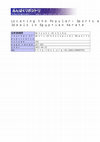
Sur la notion de culture populaire au Moyen-Orient (Senri Ethnological Reports 152), Dominique Casajus, Tetsuo Nishio, François Pouillon, Tsuyoshi Saito (dir.) , 2021
This paper approaches the notion of the popular in relation to the ways in which social class ide... more This paper approaches the notion of the popular in relation to the ways in which social class ideals are performed and redefined through sporting activities. Egypt is a highly socioeconomically stratified country in which people live side by side knowing where the social class divide lies. I approach karate classes as a commodity that sheds light on social class ideals of the Egyptian middle class. Karate is the second most popular sport in Egypt after football. Some time ago, Bourdieu made us aware that we perform social class through consumption. In Egypt, public discourses seek to establish a correlation between the choice of sports or the sporting club one subscribes to and one’s social class
background. For the middle classes who aspire to maintain their status, engaging in sporting activities could serve as a means to accumulate cultural capital. Unlike squash or table tennis, which are limited to the upper class, Egyptians from all walks of life play or have experience in playing karate. By looking at the social class dynamics at play in karate classes, I will demonstrate how the middle class define their social class ideals in contradistinction to those of lower and upper class Egyptians. In contrast to the upper class, who view karate as a pastime, the middle class emphasise the educational value of the sport. I argue that the discourse on the usefulness of karate, which marginalises ‘fun’ in sporting activities, characterises one of the most important social class ideals of the Egyptian middle classes.


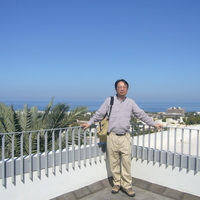

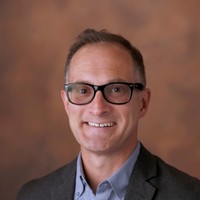


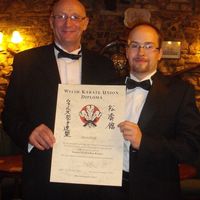

Uploads
Papers by Hatsuki Aishima
Books by Hatsuki Aishima
Conference Presentations by Hatsuki Aishima
Edited special issues by Hatsuki Aishima
background. For the middle classes who aspire to maintain their status, engaging in sporting activities could serve as a means to accumulate cultural capital. Unlike squash or table tennis, which are limited to the upper class, Egyptians from all walks of life play or have experience in playing karate. By looking at the social class dynamics at play in karate classes, I will demonstrate how the middle class define their social class ideals in contradistinction to those of lower and upper class Egyptians. In contrast to the upper class, who view karate as a pastime, the middle class emphasise the educational value of the sport. I argue that the discourse on the usefulness of karate, which marginalises ‘fun’ in sporting activities, characterises one of the most important social class ideals of the Egyptian middle classes.
background. For the middle classes who aspire to maintain their status, engaging in sporting activities could serve as a means to accumulate cultural capital. Unlike squash or table tennis, which are limited to the upper class, Egyptians from all walks of life play or have experience in playing karate. By looking at the social class dynamics at play in karate classes, I will demonstrate how the middle class define their social class ideals in contradistinction to those of lower and upper class Egyptians. In contrast to the upper class, who view karate as a pastime, the middle class emphasise the educational value of the sport. I argue that the discourse on the usefulness of karate, which marginalises ‘fun’ in sporting activities, characterises one of the most important social class ideals of the Egyptian middle classes.
of intellectual and spiritual maturation (e.g. batin, spiritual growth, intuitional
knowledge and inner awareness) may converge, intersect, and also diverge from
modern epistemologies of the inner self. In doing so, the contributions touch upon
two questions in particular. On the one hand, they discuss the relation between
selfhood and the transcendent, describing not only how the self is built but also
how it is somehow unbuilt in the relationship with the divine: rather than defined
through its ‘inner’ boundaries, the self is seen as emerging continuously on the
background of a wider horizon of existence, that is, the transcendent dimension
of life. On the other hand, the authors highlight the overlaps between notions
belonging to the Islamic tradition and modern discourses on interiority, tracing
out the specific social and micro-political issues that lie behind this entanglement
through key experiential notions such as dhawq, love, imagination, dreams and
visions. In such a way, the papers tell about the strive of translating transcendence
into new forms of sociality which may subvert, substitute or be alternative to
institutionalised, established mundane and also religious forms of interaction and
inter-subjectivity.